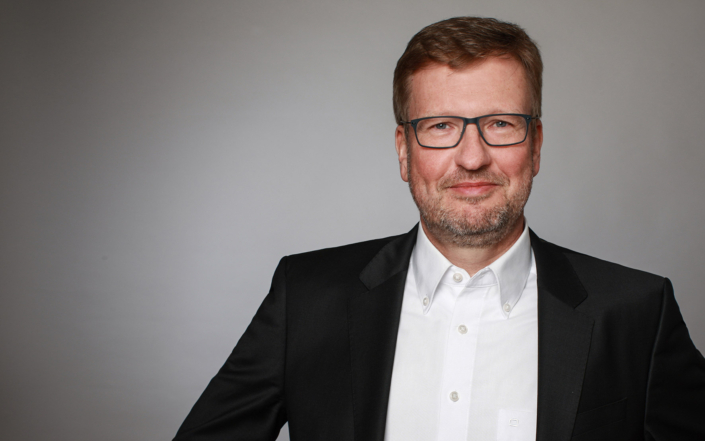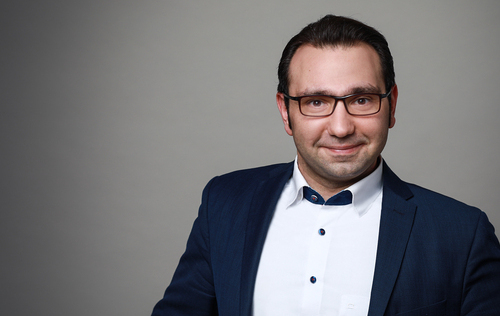
– Press Review
Insurance Transformation Strategies
- HAMBURG
- •
- •
- Hans-Jürgen von Henning & Ali Rahimi
- •
- The article was published in "Sapport Magazin" in January 2023. (Part 2/2)
IT consolidation is primarily intended to help insurance companies remain price stable vis-à-vis their customers. For this reason, IT realignment is considered more important than zeitgeisty and fashionable platform models - especially because there are risks that management wants to avert. This also affects core and peripheral systems and their transition.
The transformation of IT affects systems, processes and also people. One example is that clerks who are not familiar with IT are moving into IT and the data warehouse, where they are beginning to train with low- or even no-code platforms. The goal is to independently adapt automated processes to workflows. And this should be done securely and independently of the underlying IT systems.


Hans-Jürgen von Henning and Ali Rahimi are systems integration experts. Von Henning is a Chief Product Owner at IKOR, Rahimi held the same position at IKOR until recently and is now Head of Business Development at X1F, the technology holding company to which IKOR belongs, since January 2023.
The aim is to enable companies to deploy their resources in a more targeted manner and make more and better automated decisions. In a later expansion stage, customers will also be offered better services.
Insurers often establish organizationally independent subsidiaries for such setups; they then introduce modern software systems there using greenfield models - independent of existing application landscapes. However, this does not free the parent company from legacy burdens such as entrenched, rigid processes and inflexible legacy systems that are now too expensive to develop, maintain and operate.
The ideal for a new product idea is to be as completely digitalized as possible with a high dark processing rate, lean internal processes, more cost-effective operations and market transparency for dynamic price determination. This requires system support that exploits all potential from day one.
– OVERVIEW
Transition model minimizes risks and evaluates solutions
A transition strategy paves the way for consolidating the IT landscape and also enabling new business models. Modern transition projects can be divided into different groups. These include "Lift and Shift" and "Improve and Move" around core systems. However, the integration of transition systems represents complex and expensive measures. And there is also the question of how insurers should use green and brownfield approaches:
1. Core systems
Improve and Move: Insurers benefit above all from the introduction of new core systems in that they can gain initial experience with an isolated product. For the transition, this means successively migrating existing products to these systems at a later date. This helps to modernize application landscapes step by step and to limit the risk involved in introducing new core systems - including migration. In this way, all new and brand-differentiating features are available from the time of introduction. However, only systems that are also viable in the final expansion stage are considered.
Lift and Shift: If an insurance company is not aiming for the overarching deployment of new core systems, lean solutions can be considered. Depending on the complexity, this can minimize the costs of development and operation; for example, by moving existing solutions to a more modern execution platform. Cobol programs can be converted into Java applications that are easier to cloudify through manual refactoring or partially automated transpiling.
2. Repurposing systems: evaluating proven and new solutions in a meaningful way
The selection of conversion systems is particularly time-consuming and associated with high risks. So why not - see Brownfield - use proven conversion systems such as CRM, input, output, collections and disbursements, commission, and broker management? With the help of new solutions, individual peripheral systems can be replaced. And the organizations succeed in evaluating these as target systems - analogous to the core systems. However, the responsibility for this must be oriented toward insurance processes with owners who are capable of providing information. Systemically, it must not end at application boundaries.
3. Greenfield or Brownfield
A mixed greenfield-brownfield approach - new construction together with the integration of existing systems - opens the way for organizations to achieve comprehensively consolidated end-to-end integrated application landscapes. These support not only process optimization, but also overarching digitalization goals. The integration architecture plays a key role here. In the best case, it ensures that systems are effectively decoupled - the basis for a gradual transition from existing to more flexible target systems.
Setting priorities correctly: Consolidation has the right of way
But when it comes to new products and business models, internal conflicts of interest must first be clarified, which also arise from process and system goals. The short-term decisions are usually made in favor of urgent consolidation tasks. Here, the investment costs are enormous. And the risks of not completing the necessary system conversions in time are very high.
Because many aging mainframes need to be replaced, there is a need for urgency - because legacy systems are at high risk of failure from employees who are now gradually retiring. These legacy systems also usually do not meet the increased efficiency requirements from management - much more so, the maintenance costs are too high. The consolidation impact relates to all layers and silos as well as to IT and its transformation itself. In addition, no company wants to build up legacy skills anymore, because they will already be obsolete in the coming years. Nor do they harmonize culturally or organizationally with agile teams, trains and tribes.
So to avert risks and ensure greater flexibility, many insurance companies are countering the retirement of mainframe architects and legacy system programmers, and thus their gradually eroding personnel structure, with an agile IT transformation. Transitional setups are designed to absorb legacy and legacy systems during the transition and incorporate them into the integration.
– DIVERSIFICATION
"Seeking employees worldwide"
The economic strategies of longer-term expansion and medium-term IT consolidation enable sophisticated development operations for closely timed maintenance cycles. This goes hand in hand with dedicated technology expertise in Kubernetes or Cloud Foundry, programming languages such as Java or Python, and knowledge of artificial intelligence and corresponding platforms. Additionally, there are frameworks for frontends such as React or Angular - with suitable backends for frontends with "NodeJS". The employees who master these platforms, frameworks, frontends or DevOps have long had to search for companies worldwide. Without displayed skills, knowledge and experience, insurance companies cannot diversify at all levels of their business - be it geographically, by line of business, target groups or markets.
SAP standard software for existing customer management
As a rule, integration practice in the insurance environment requires new core systems for application, policy and claims processing. Whether insurers need to rebuild all peripheral systems for this and integrate them with the core systems is a case-by-case decision. Whether the company's existing inventory is also relevant in the context of the new business model or product is also important: Existing customers are valuable - with a view to overarching CRM, customer lifecycle value and information on the sales organization for new products and business models.
The standard software that dominates the insurance industry is suitable for this purpose. For example, the SAP FS-CD collection and disbursement module and insurance subledger as a specific version of SAP FI-CA. It carries out payment transactions and general ledger aggregation of the posting data. Clerks receive a 360-degree view of individual customers across all lines of business. The only prerequisite is, of course, that the customer data is managed consistently and centrally.
This idea runs through other central SAP systems. Individual Fiori apps, for example - as a standard technology for front ends - always operate at the system level, not across systems. SAP S/4HANA makes it possible to serve customer portals with a uniform customer experience. Using CDS views, for example, payment transaction information can be selected from various SAP systems with SQL commands and displayed in portals. The trend here is toward a decoupled microservices architecture. This obsoletes bloated, non-transparent interfaces that are difficult to maintain. A system integration platform - such as SIP with its open source framework - ensures that data flows. However, this requires attention to design and implementation.
– LAYER MODEL
Effects of IT consolidation at all levels
The layer model shows how personnel can be deployed more effectively at all levels, from the base of the operating system to the user interface.
| Level | Corporate Department | Change through IT consolidation | Effectiveness and change for employees |
| Level 5 | User interface for Sales | Increase potential for lead management/sales via data analytics | New opportunities in cross-selling and upselling |
| Level 4 | Insurance departments Specialist departments | With automation and AI, simple tasks are transferred to the IT system | Improvements in second- and third-level support for customers |
| Level 3 | IT Department
|
New skills are in demand: Java, analytics, artificial intelligence | Less system development, more system integration |
| Level 2 | IT service provider
|
High degree of automation of IT systems is achieved | Fewer external resources and services required |
| Level 1 | Operating system and frameworks | Purchase price for Java development is lower than for development in legacy systems | Java upgrades and maintenance require tighter time cycles than legacy systems |
New requirements of Java systems
The article was published in "Sapport Magazin" in January 2023. To the PDF of the German text.

